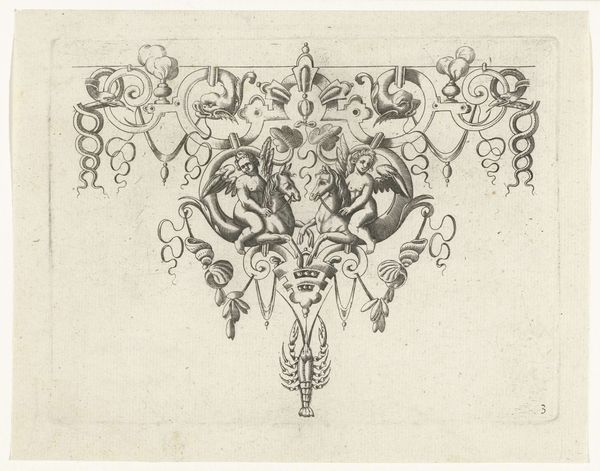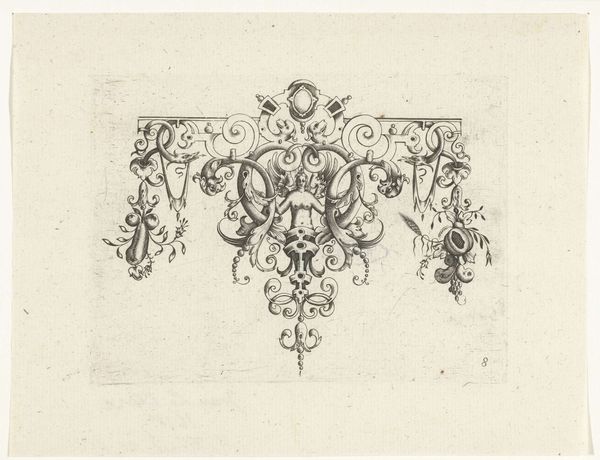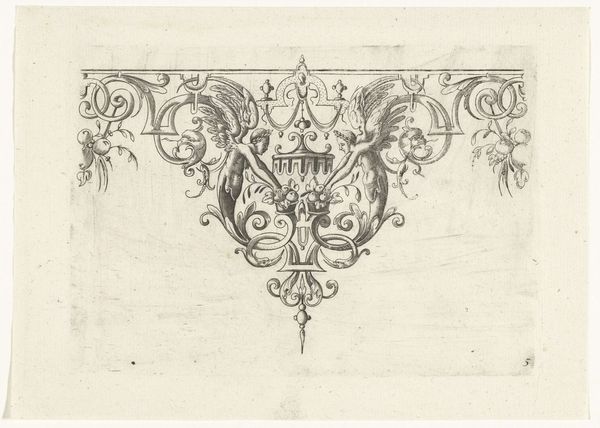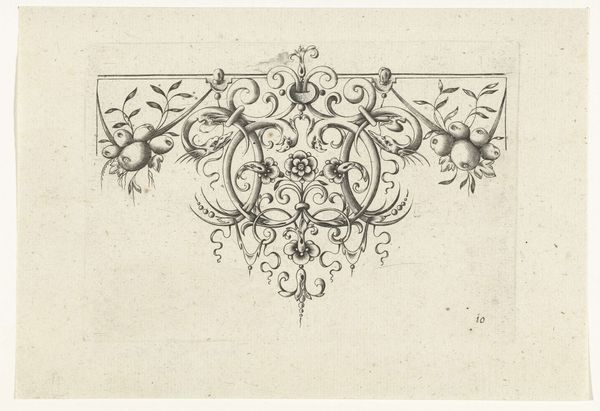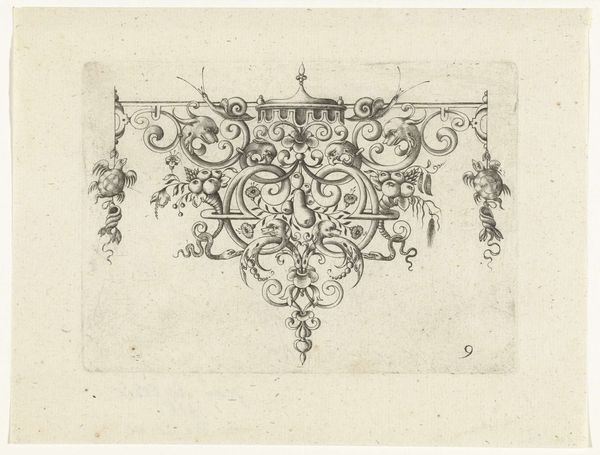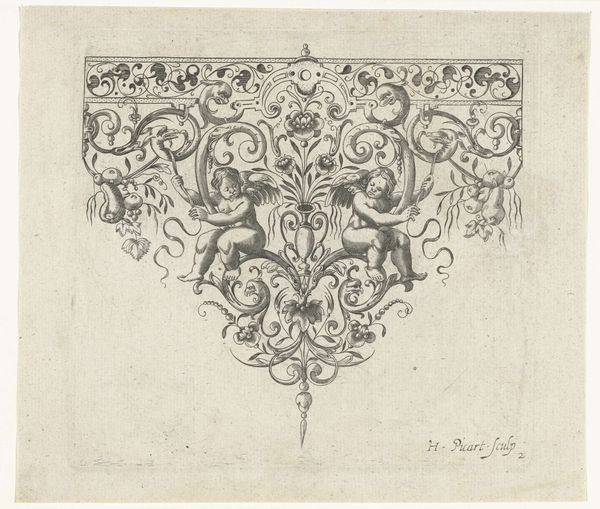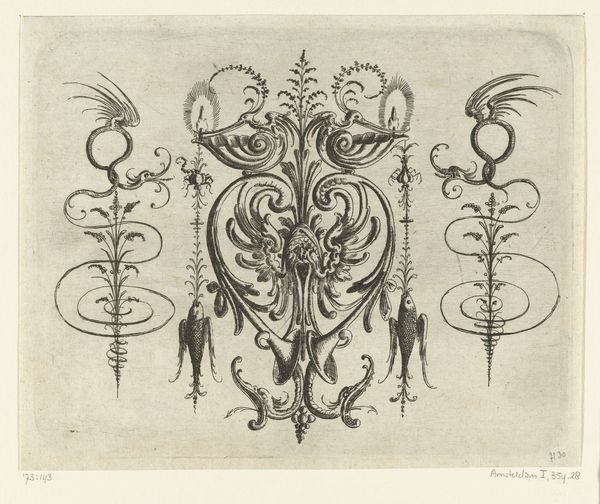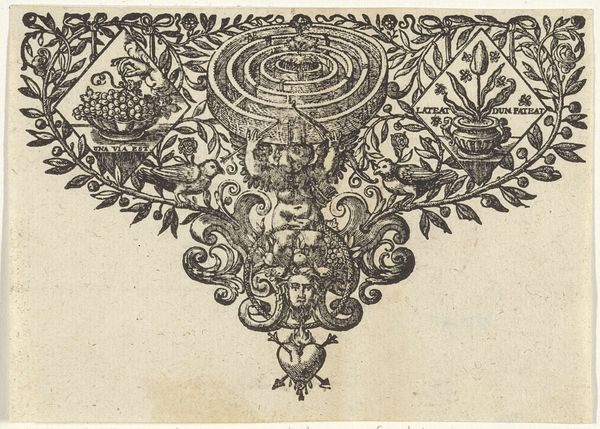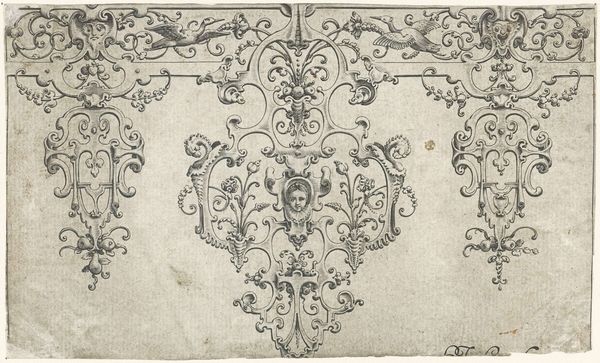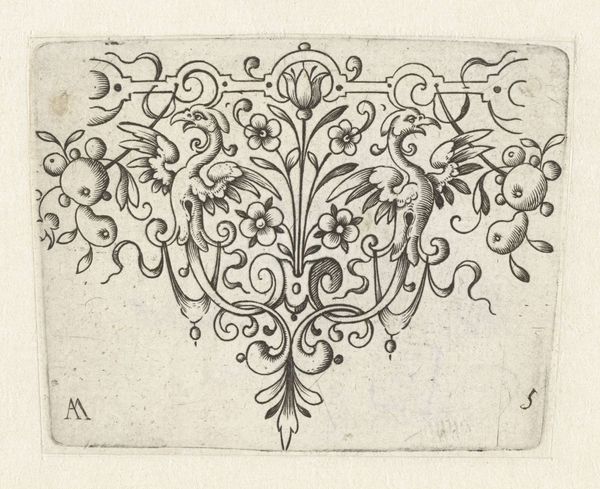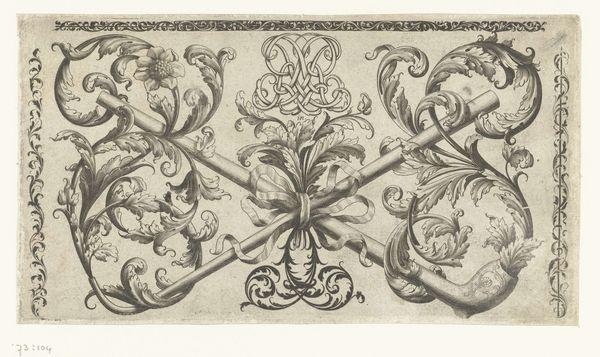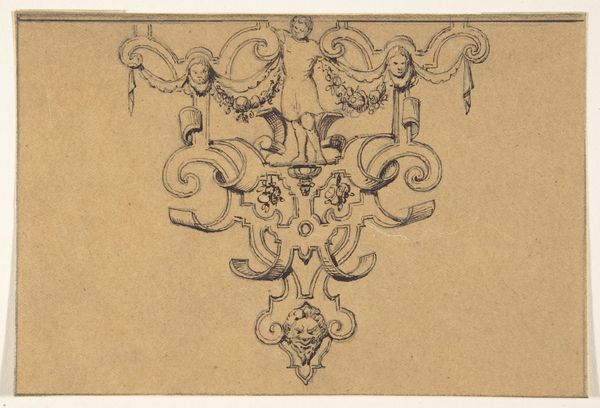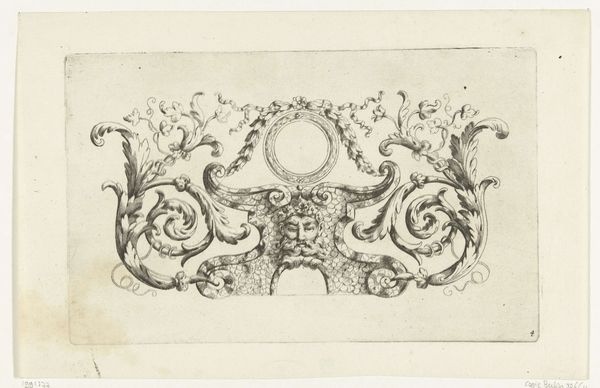
ornament, print, engraving
#
ornament
#
allegory
#
baroque
# print
#
figuration
#
line
#
decorative-art
#
engraving
Dimensions: height 124 mm, width 152 mm
Copyright: Rijks Museum: Open Domain
Curator: This detailed engraving from 1618 is titled "Randornament met wapenschild," which translates to "Border Ornament with Coat of Arms." It's attributed to H. Picart, rendered meticulously in line. Editor: Immediately, I'm struck by the contrast. There’s this rigid structure of the border itself, then these almost fluid, organic elements intertwined with it. It's ornate, but slightly unsettling. Curator: That tension is fascinating. The core of the composition hinges on the heraldic imagery; shields, skull and flanking hybrid figures suggesting both authority and the awareness of mortality so pervasive in the Baroque era. Editor: And those figures, are they sirens? The hybridity speaks volumes. A siren implies lure and danger and these are literally part woman, part scrolling ornamentation, suggesting they're made or are products themselves. It speaks to consumption doesn’t it? Curator: Absolutely, the material culture implications are pronounced. Consider the purpose of such prints. Disseminated widely and relatively cheaply, ornaments like these were templates to inspire the creation of luxury objects and goods by craftsmen across many materials. It reveals the manufacturing networks operating at the time. Editor: It does more than that though; I keep returning to the symbolism, the apples framing each side of the border; those represent temptation but alongside death itself at the coat of arms centerpiece. So it could suggest manufactured desire is linked to our own mortality. A dire message for a border ornament if so. Curator: An unsettling idea made all the more pointed by its distribution model and use: it’s literally advocating for these behaviors by making such temptations a tangible thing, an engraverable element you could introduce to anything and everything. It takes a complicated message and then makes it a pervasive element. Editor: Ultimately, this ostensibly decorative work unearths uncomfortable ideas on the consumption of worldly things being the same as consumption by worldly things. That connection and Picart’s line make a real statement even now, centuries later. Curator: Indeed. The work invites us to consider not only the final product but the complex social and symbolic frameworks surrounding it and our implication in this economy of allure and consequence.
Comments
No comments
Be the first to comment and join the conversation on the ultimate creative platform.
